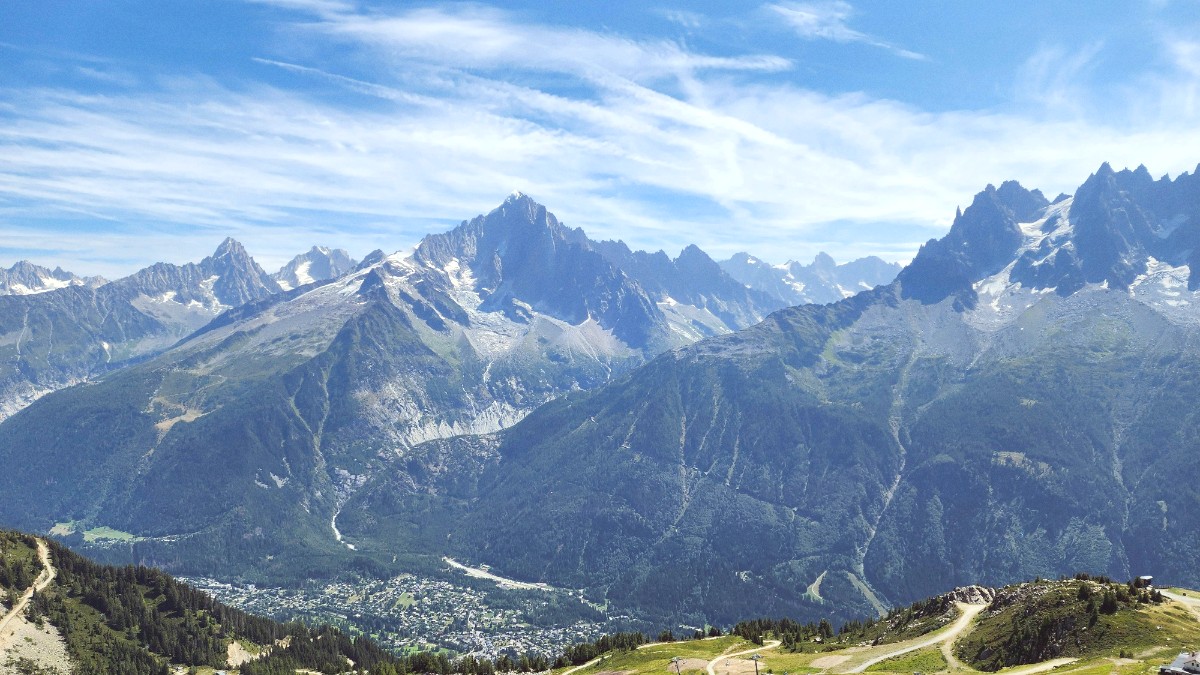
The French Alps, France
The cuisine of Chamonix and the Savoie region developed from necessity and resourcefulness. Communities in this rugged environment relied on ingredients that could be stored through long winters, like cheese, cured meats, and root vegetables.
The culinary tradition showcases practical needs and robust flavors of mountain life.
Cheese anchors Savoyard cuisine, with varieties like Reblochon, Beaufort, Tomme de Savoie, Abondance, and Raclette. These cheeses often star as the main component or a rich side.
Potatoes are a staple, found in many forms. Cured meats like sausages, hams, and dried meats offer savory notes, pairing well with cheese.
Savoyard white wines, including Apremont and Roussette, accompany rich dishes. Alpine herbs occasionally flavor meals.
Certain dishes present the local flavors fully.
A rich, hearty gratin featuring sliced potatoes, smoked bacon, onions, and Reblochon cheese, baked until bubbling and golden.
A staple in most traditional Savoyard restaurants.
A communal dish of melted cheese, typically a blend of local cheeses, infused with white wine and garlic, for dipping bread cubes.
A social and warming experience.
A semi-hard cheese heated until molten and then scraped directly onto your plate, served with boiled potatoes, cured meats, and pickled gherkins.
A delightful, rich meal.
Génépi (aromatic herbal liqueur), Vin Chaud (mulled wine in winter), local Savoyard white wines (Apremont, Roussette), and growing craft beer options.
Crêpes (sweet and savory), Churros, Brioche, and high-quality French chocolates are widely available.
Chamonix presents dining choices for all preferences and budgets.
Explore establishments like Le Hameau Albert 1er (Michelin-starred) for refined gourmet cuisine, or La Maison Carrier for high-quality traditional Savoyard fare.
Find value and quality at places like La Caleche, known for its traditional decor and generous portions of local specialties, or Munchie for Asian-fusion.
Boulangeries offer fresh, affordable meals. Supermarkets are excellent for self-catering, and the Saturday Chamonix Market provides local produce.
Vegetarian options are increasingly available; confirm no bacon in traditional dishes. Vegan choices are improving, especially in Asian restaurants.
Communication with staff is .
Inform staff about allergies. French cuisine uses flour-based sauces, so clear communication guides you to suitable dishes. Consider a translation card.
Many restaurants show heightened awareness.
Some luxury hotels or private chefs may offer specialized Savoyard cooking classes.
Visit local cheese farms like Ferme de la Montagne for traditional cheese-making demonstrations.
Local festivals throughout the year may feature regional food and drink specialties. Check the tourist office calendar.
Finding purely vegan options can pose a challenge but has seen progress. Apps like HappyCow can help locate vegan-friendly eateries in the area.
Communicate dietary needs clearly.
Halal and Kosher dining options are limited. Specialized restaurants are unlikely. Larger supermarkets may stock some certified packaged products.
This is not a widespread offering.
Chamonix cuisine mirrors the broader Savoie region. The core elements of cheese, charcuterie, and potatoes remain consistent, offering a cohesive regional flavor profile.
Specific dishes may be highlighted during local festivals or certain times of the year, like game meats in autumn.
A Michelin-starred restaurant, presenting refined gourmet cuisine with subtle alpine influences. An ideal setting for special occasions.
Renowned for its traditional Savoyard decor and generous portions of local specialties. A popular spot for a classic alpine meal.
Chamonix boasts a good selection of international restaurants, including Italian, various Asian cuisines (Thai, Japanese), and Indian.
Local Savoyard white wines like Apremont, Roussette, and Chignin-Bergeron pair well with the rich local dishes.
Discover regional varietals.
Génépi, a strong, aromatic herbal liqueur, is often consumed as a digestif after a meal.
A local tradition to experience.
Many newer or renovated establishments offer good accessibility for guests with mobility needs. Inquire directly for older buildings.
In this international resort town, staff at most restaurants have English speakers, especially in the central areas.
While not all restaurants display specific allergy menus, many show an awareness and can assist in navigating selections. Clear communication is beneficial.
For a truly local experience, try a boulangerie for breakfast or lunch, or visit the Saturday market for fresh produce.